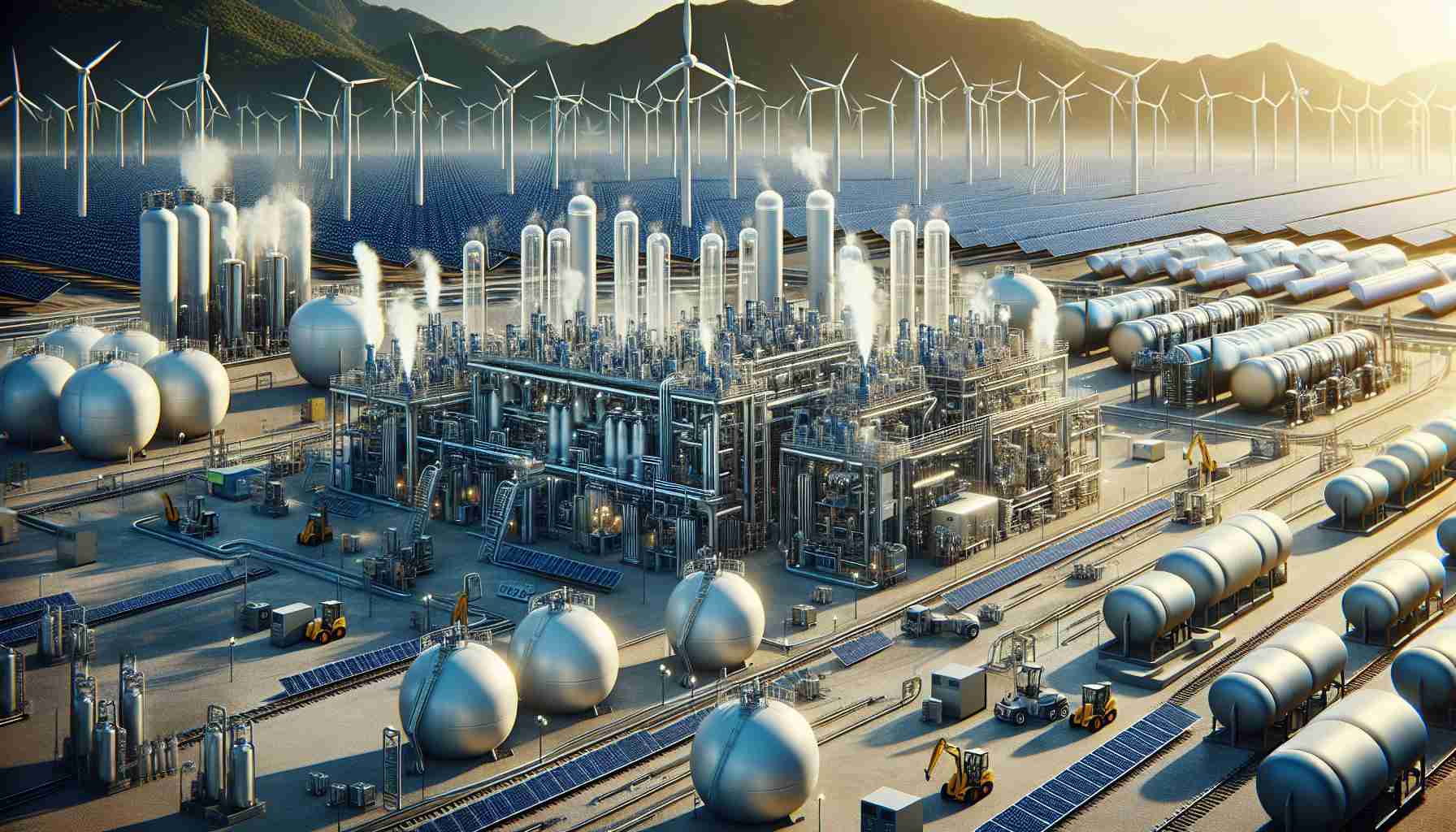In 2028, a groundbreaking green hydrogen and ammonia facility will commence operations in Mexico’s Isthmus of Tehuantepec. This ambitious project is spearheaded by Helax, a company backed by Danish investment, as confirmed by Juan Carlos Vera Minjares, the general director responsible for the Interoceanic Corridor.
Currently in the phase of public gatherings and consultations with indigenous communities, the project aims to align with regional needs and environmental considerations. Construction is slated to begin in 2026, setting the stage for a major leap in Mexico’s green energy ventures.
The expansive $10 billion investment will focus on generating green hydrogen and ammonia at a scale intended for industrial utilization and marine fueling. This initiative is a key component of the federal government’s commitment to enhancing environmental sustainability.
In addition to being a significant step for the energy sector, the Helax initiative represents a transformation for the local economy. It is positioned within the broader investment strategy established by previous presidential administrations to boost employment and infrastructure in the region.
As part of the informational outreach, the project will also undergo vital environmental assessments to ensure minimal ecological impact while maximizing community and economic benefits. This innovative development is poised to position Mexico as a leader in sustainable energy production in the future.
Mexico Set to Lead the Green Energy Revolution with $10 Billion Hydrogen Facility
Overview of the Green Hydrogen and Ammonia Facility
In an exciting development for renewable energy, Mexico is set to launch a pioneering green hydrogen and ammonia facility in the Isthmus of Tehuantepec, with operations commencing in 2028. Spearheaded by Helax, a company enjoying backing from Danish investors, this facility promises to not only revolutionize energy production in Mexico but also transform the local economy.
Key Features of the Facility
– Investment Scale: The facility represents a remarkable $10 billion investment dedicated to creating green hydrogen and ammonia for industrial use and marine fueling.
– Environmental Compliance: As part of the project, extensive environmental assessments will be conducted to ensure the operations adhere to strict ecological standards, minimizing environmental impacts.
– Community Engagement: Currently, the initiative is focused on community consultations with indigenous groups, aiming to align with local needs and gain support from residents.
– Sustainability Commitment: This facility aligns with the Mexican federal government’s wider agenda to enhance environmental sustainability, showcasing a commitment to renewable energy sources.
Pros and Cons of the Project
Pros:
– Economic Growth: The facility is expected to generate significant employment opportunities in the region, invigorating the local economy.
– Leadership in Renewable Energy: Mexico is on track to position itself as a leader in sustainable energy production, guiding global efforts towards greener alternatives.
– Innovation in Energy Production: Green hydrogen is considered a critical component for future energy systems, making this investment particularly forward-looking.
Cons:
– Ecological Concerns: Large-scale energy projects often face opposition due to potential ecological disruptions, necessitating thorough environmental reviews.
– Community Resistance: Despite ongoing consultations, there could be pockets of local resistance if community concerns are not adequately addressed.
Use Cases of Green Hydrogen and Ammonia
The green hydrogen produced at this facility has various applications:
– Industrial Use: Hydrogen is crucial for many industrial processes, including the production of ammonia for fertilizers, reducing reliance on fossil fuels.
– Marine Fuels: The ammonia generated can serve as a cleaner alternative to traditional marine fuels, promoting sustainable shipping practices.
– Energy Storage: Green hydrogen can be used for energy storage, helping to balance supply and demand in renewable energy systems.
Limitations and Challenges Ahead
While the future looks promising, several challenges remain:
– Infrastructure Development: Building the necessary infrastructure to transport and handle hydrogen and ammonia at scale will require careful planning and investment.
– Technological Advancements: Continued innovation in hydrogen production and storage techniques is essential to ensure cost-effectiveness and efficiency.
– Regulatory Environment: Navigating the regulatory landscape and ensuring compliance with both local and international standards will be crucial.
Conclusion
The Helax green hydrogen and ammonia facility marks a monumental step in Mexico’s green energy ambitions. With a sizeable investment and a commitment to sustainability, this initiative is poised to deliver economic benefits while contributing to the global shift towards renewable energy.
For more information about sustainable energy initiatives, visit energy.gov.

